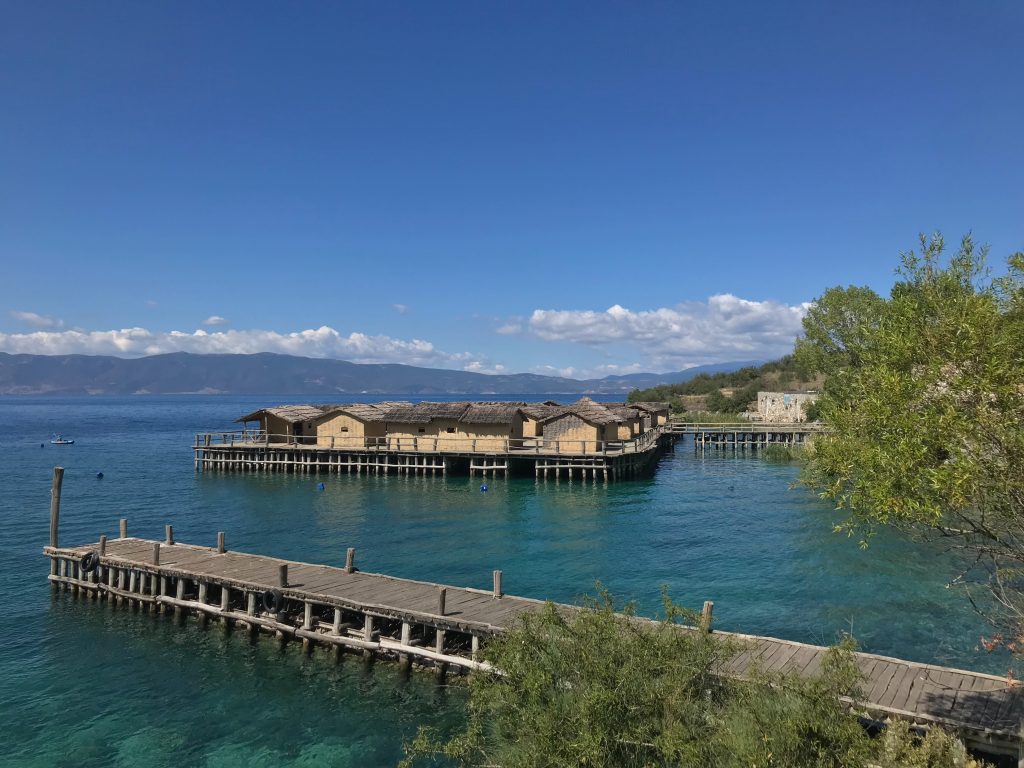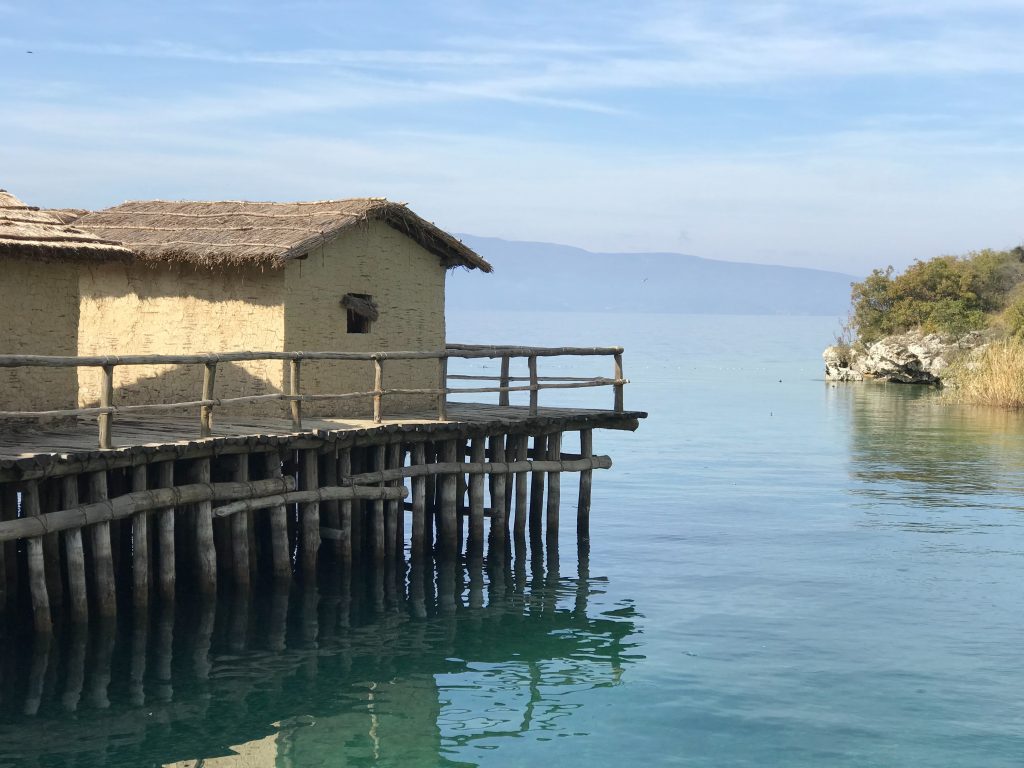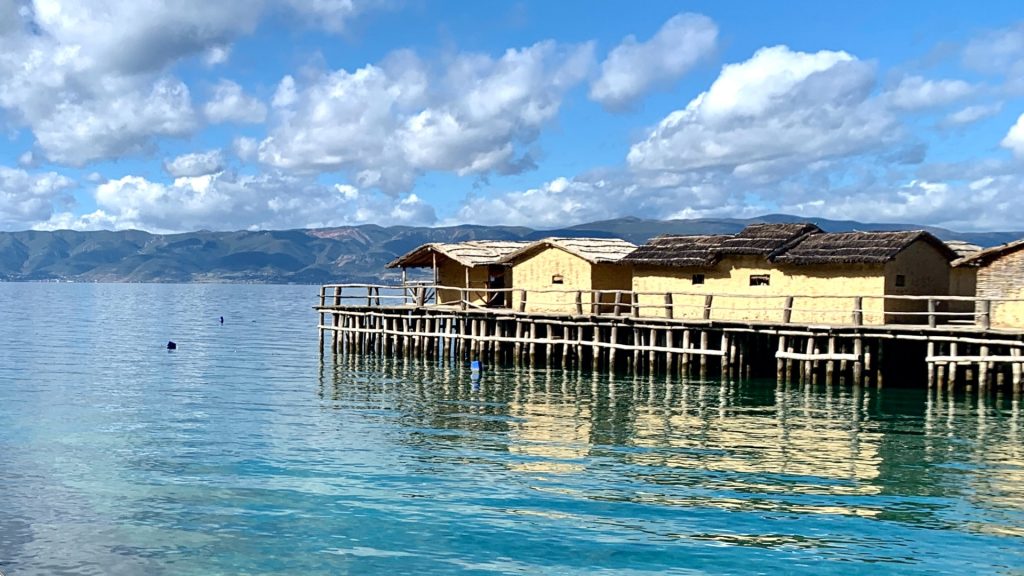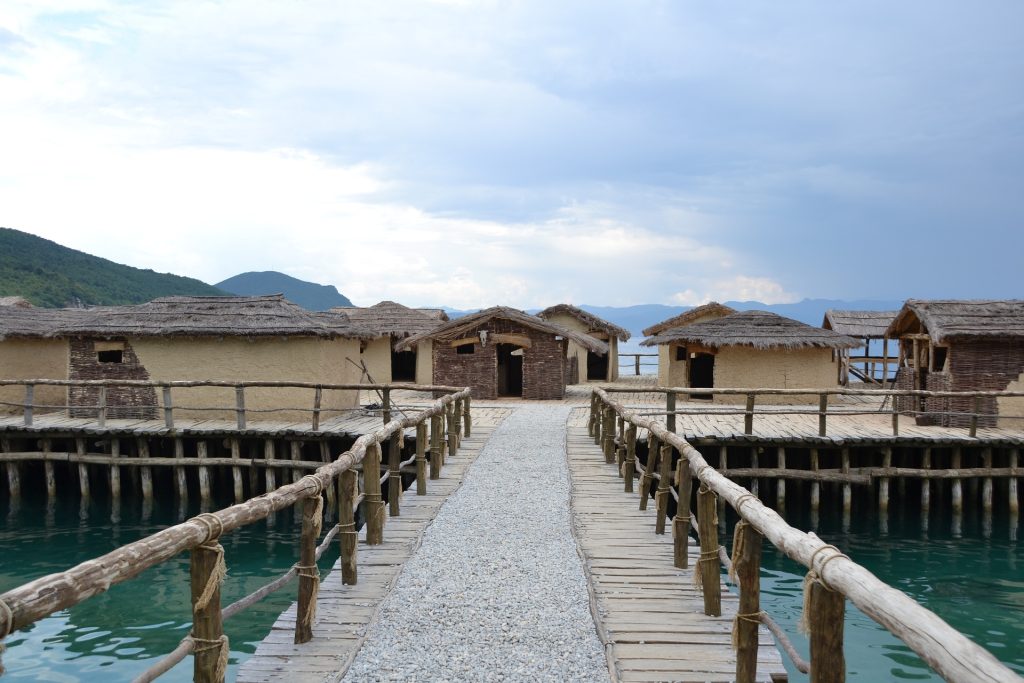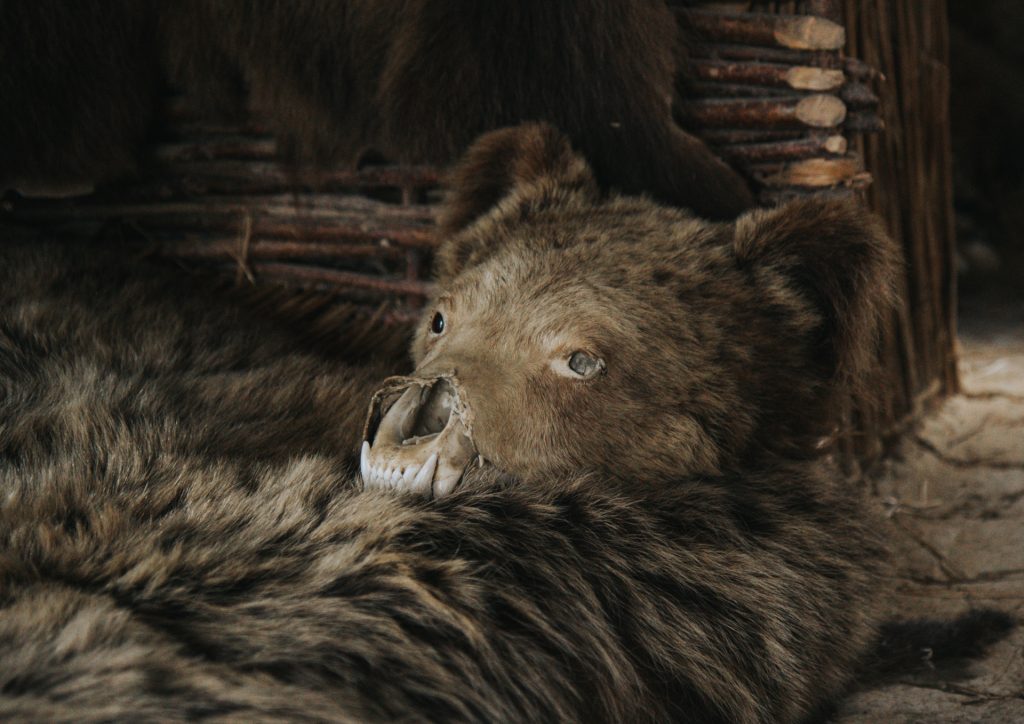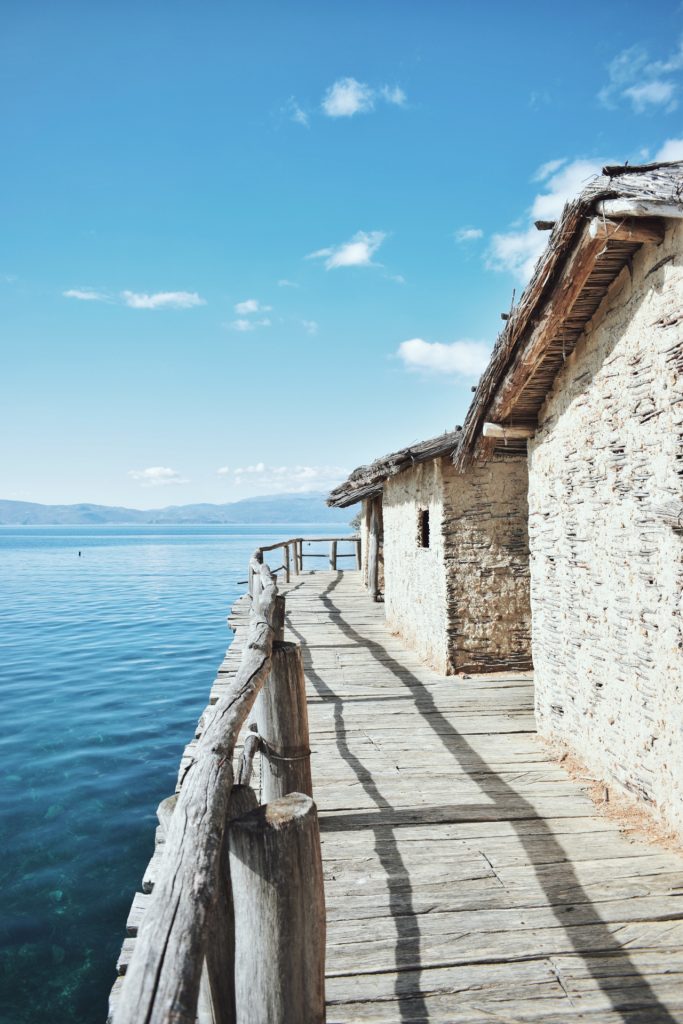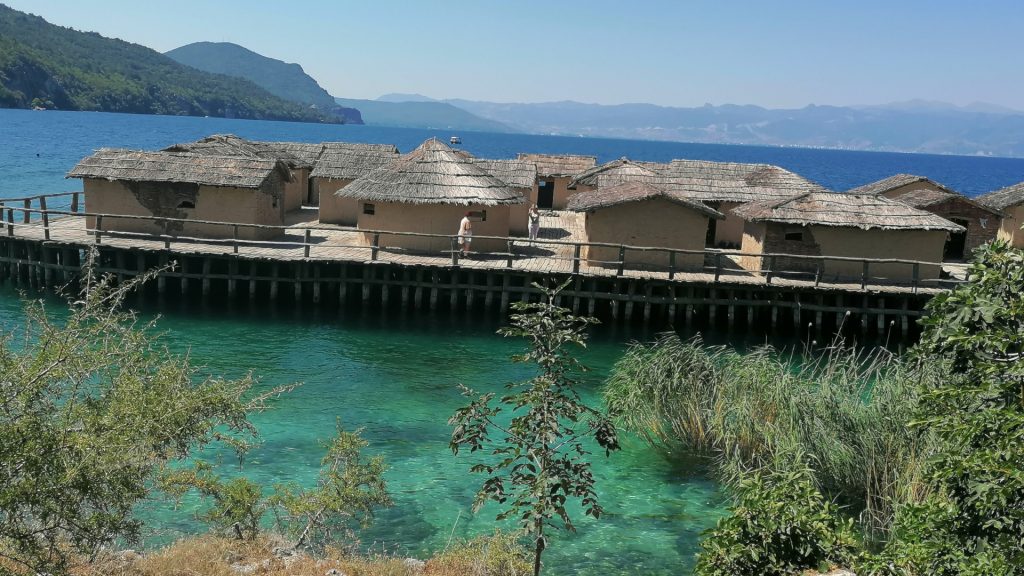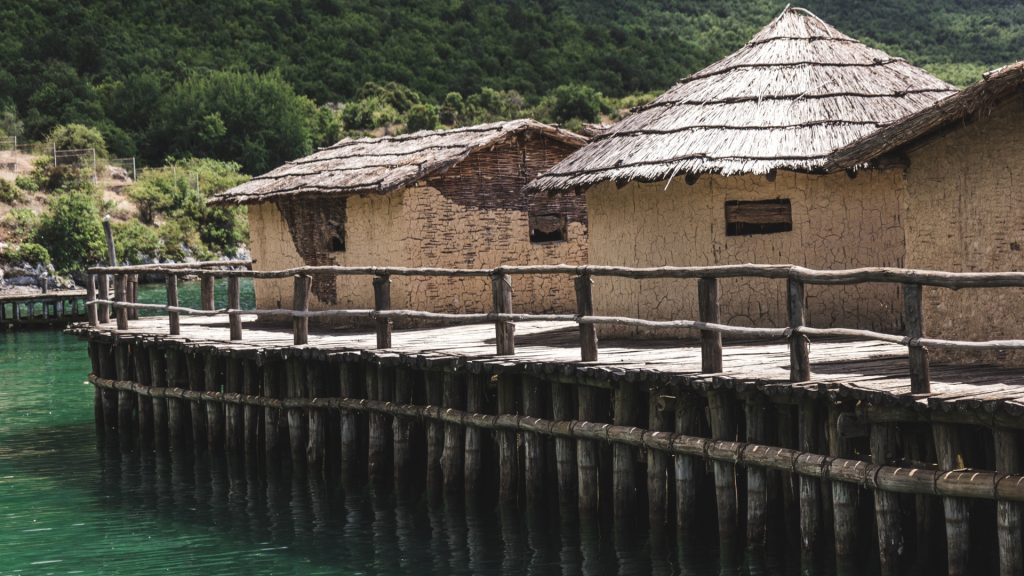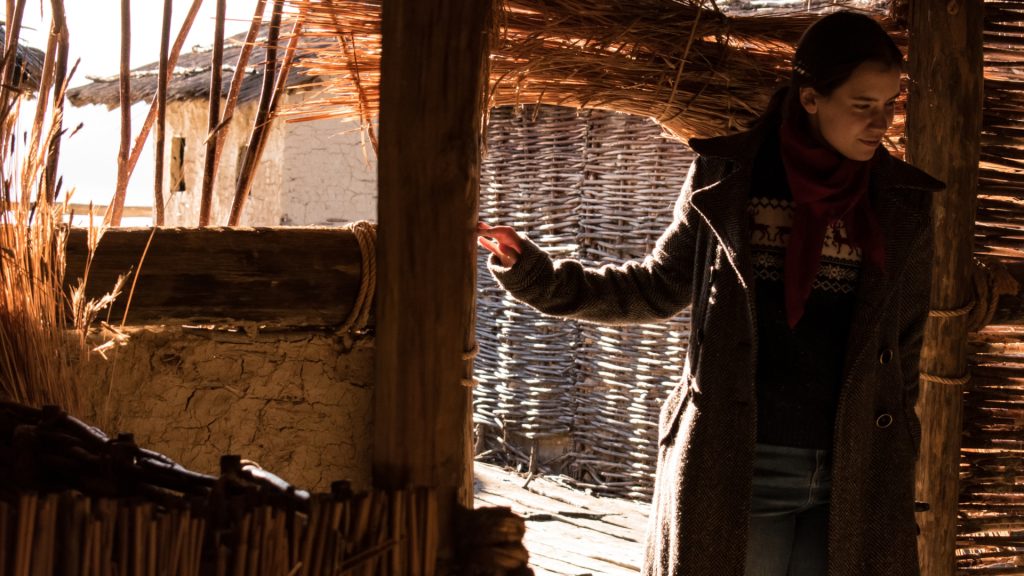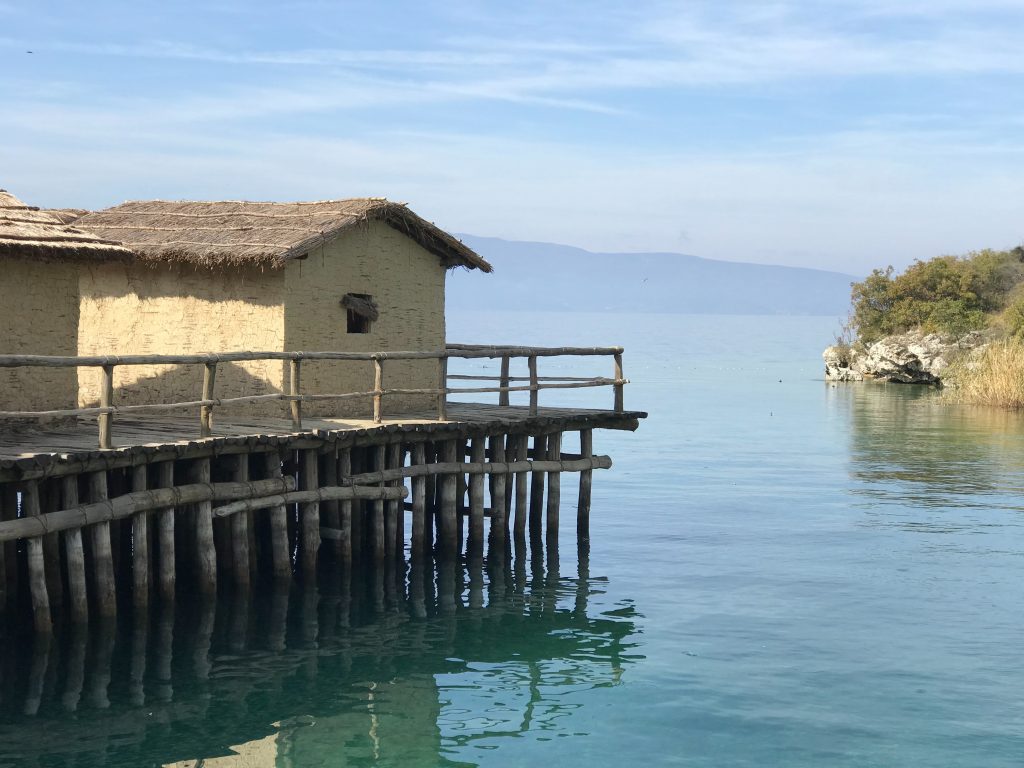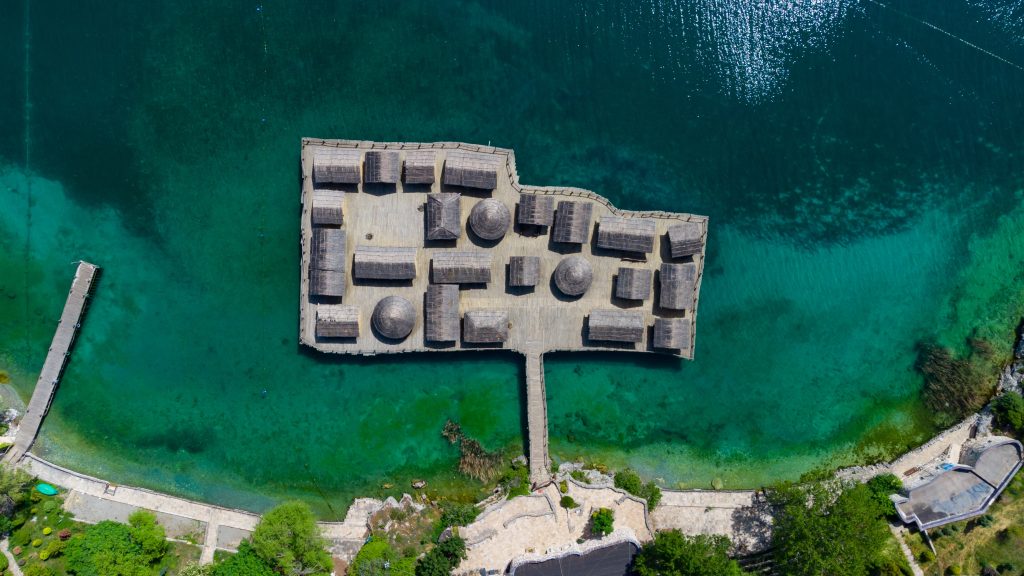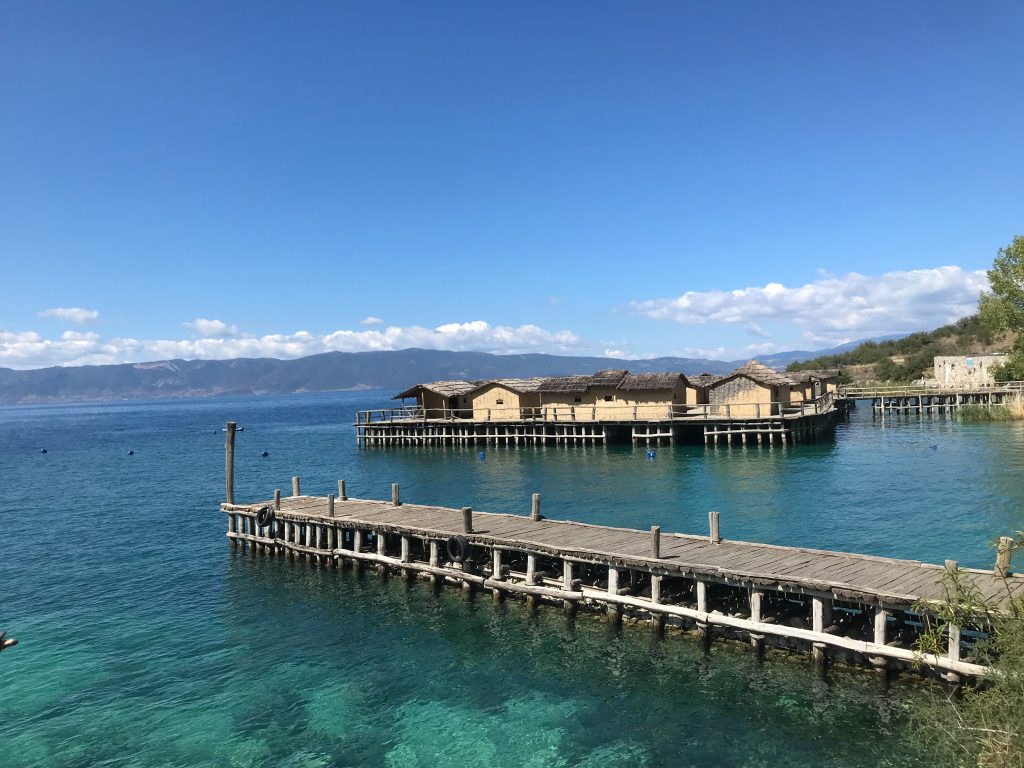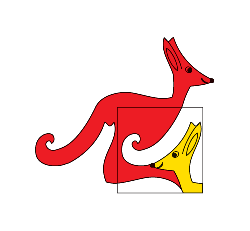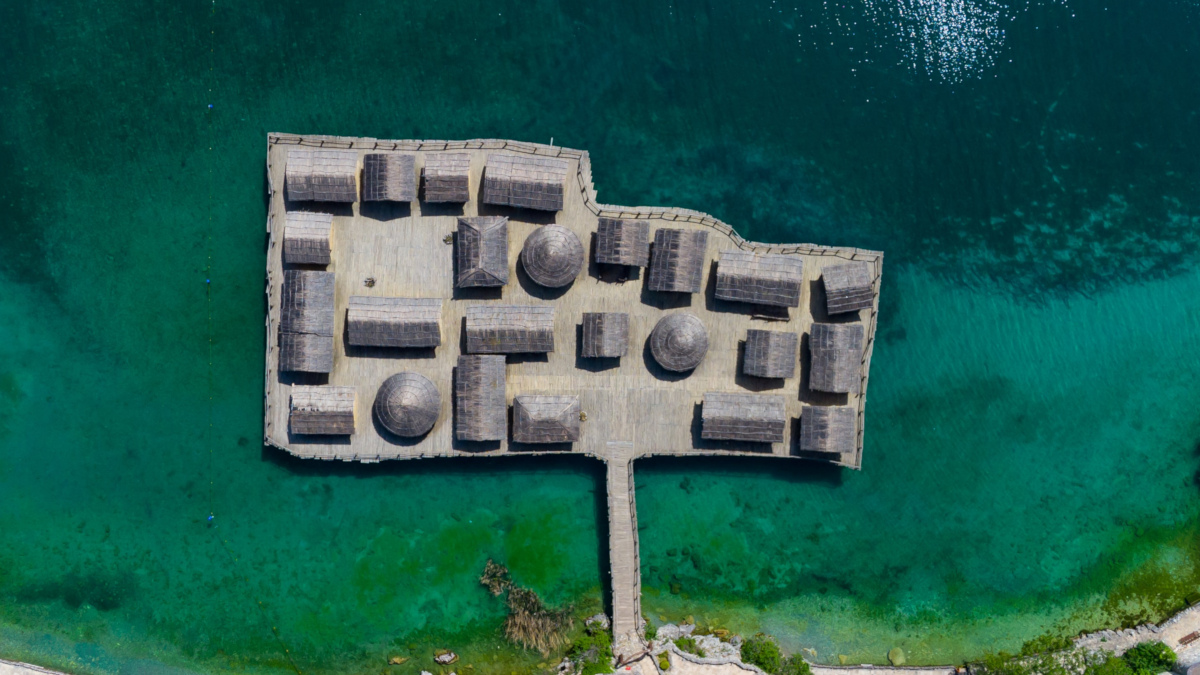„The museum was built in 2008; today the museum has 24 houses built on the platform above the lake. ”
The underwater investigations conducted in Bay of the Bones give rich material and information for the life of prehistoric people who lived in these areas. The divers found 6.000 wooden piles at the bottom of the lake, together with plenty of other artifacts and bones. That is the reason why one of the names of this museum is the “Bay of Bones”. Another interesting fact is that the divers found bones from animals only, they didn’t find any human bones. An explanation for this is that in that time human bodies were burned. All the material that the divers found dates back to Late Bronze Age and Early Iron Age from 1.200 B.C. to 700 B.C. At that time, the settlement was three times bigger than the replica of the settlement which can nowadays be visited. The platform is connected to land by a wooden bridge. In the time of the prehistoric people, there was also a bridge, but back then the bridge was mobile. With this mobile bridge, the prehistoric people could defend and protect themselves from the dangers that came from the ground. As soon as the construction of this museum was completed, it has become one of the most visited museums in Macedonia, so the government of the Republic of Macedonia decided to expand this museum. In 2010, the settlement on the water was expanded and 16 more prehistoric houses were built.
Except for the prehistoric settlement, the museum also has a museum building where visitors can see the artifacts found by the divers.
You can also see pictures and presentations of the original settlement, which is still at the bottom of the lake. For the visitors who want to see the original underwater settlement, there is a scuba-diving center next to the museum building. There is a working coffee bar where visitors can enjoy coffee and drinks with amazing views of the settlement and the Ohrid lake. After visiting the settlement and discovering how people lived back in prehistory, the visitors can continue their journey to the hill above the settlement where the Roman fortress was founded. The fortress is part of the museum complex “Bay of Bones” and it dates back to the 3rd century A.D. The fortress offers gorgeous views of the prehistoric settlement, Ohrid lake, and the mountain Galichica. There are picnic areas in the fortress, as well. These prehistoric settlements and the way of life of these prehistoric people from these areas are also described by Herodotus in one of the chapters from his books:
“They (the dwellers) who dwelt about Mount Pangaeum and they likewise who inhabited Lake Prasias, were not conquered by Megabazus. He sought indeed to subdue the dwellers upon the lake, but could not effect his purpose. Their manner of living in the following. Platforms supported upon tall piles stand in the middle of the lake, which was approached from the land by a single narrow bridge. At first, the piles which bear up the platforms were fixed in their places by the whole body of the citizens, but since that time the custom which has prevailed about fixing them is this: They were brought from a hill called Orbelus, and every man drives in three for each wife that he marries. Each has his hut, wherein he dwells, upon one of the beneath: and there won’t is to their baby children by the foot with a string, to save them from rolling into the water. They feed their horses and their other beasts upon fish, which abound in the lake to such a degree that a man has only to open his trap-door and to let down a basket by a rope into the water, and then to wait a very short time when he draws it up quite full of them. The fish are of two kinds, which they call the Paprax and the Tilon.”
